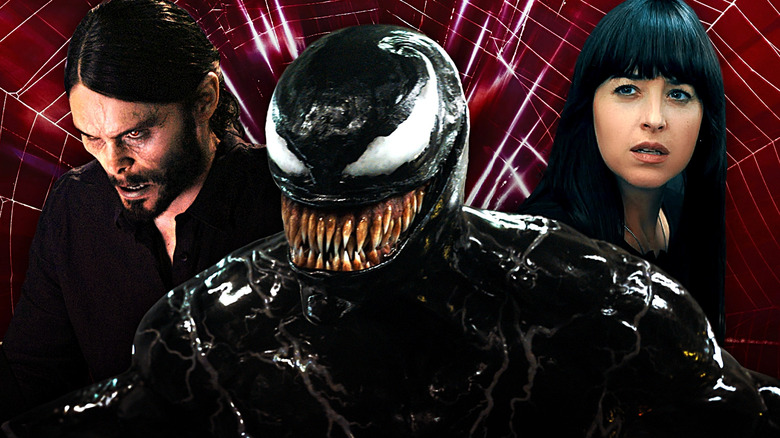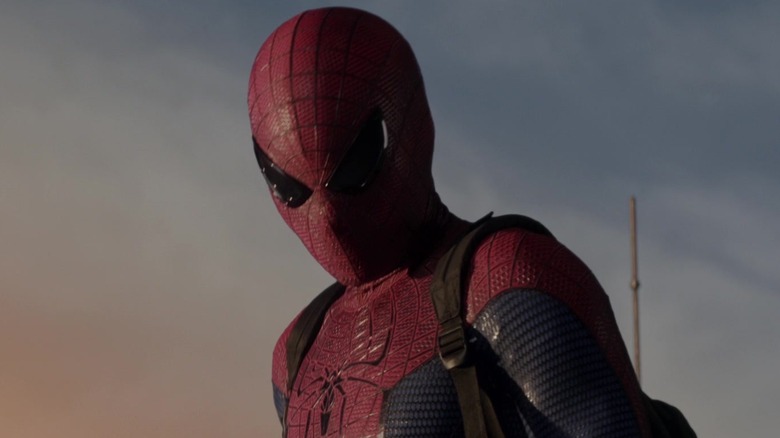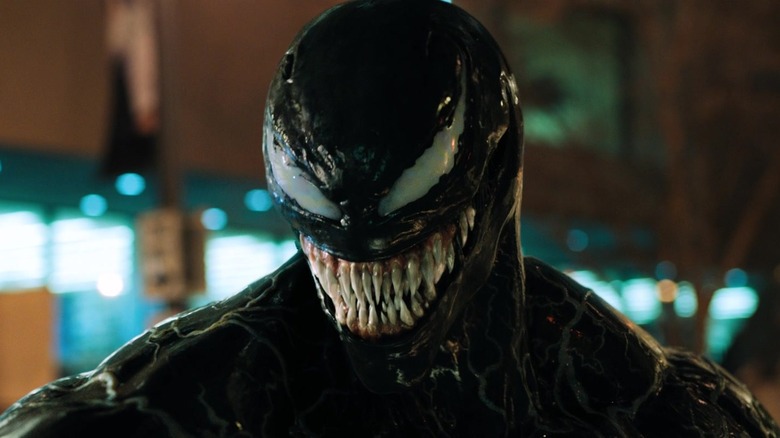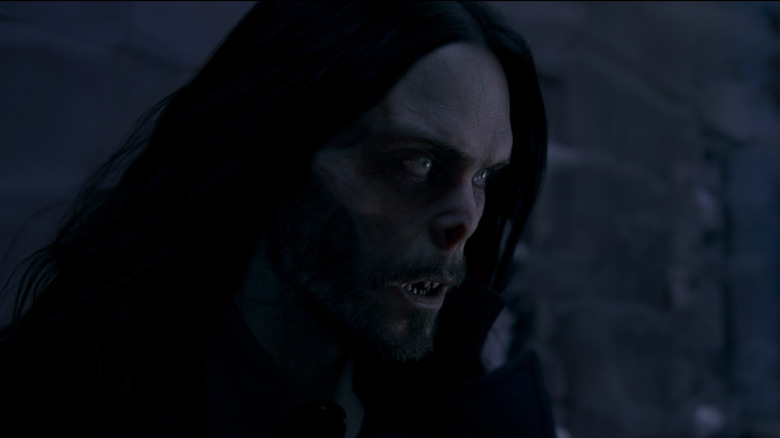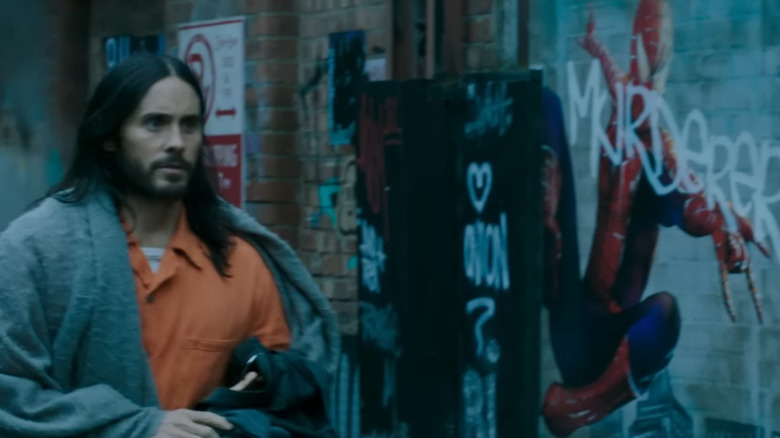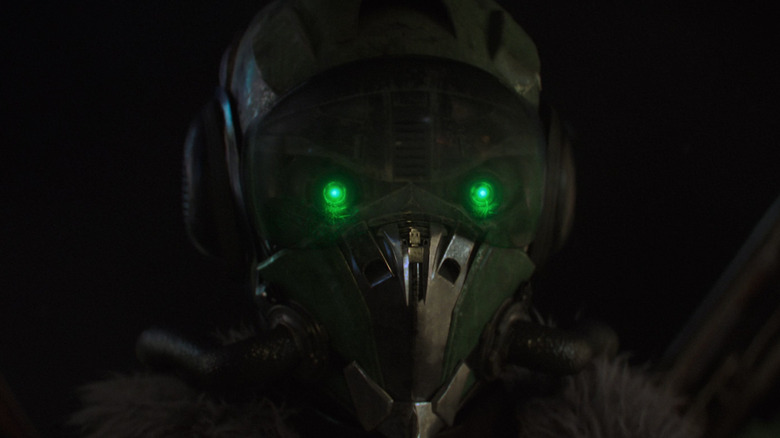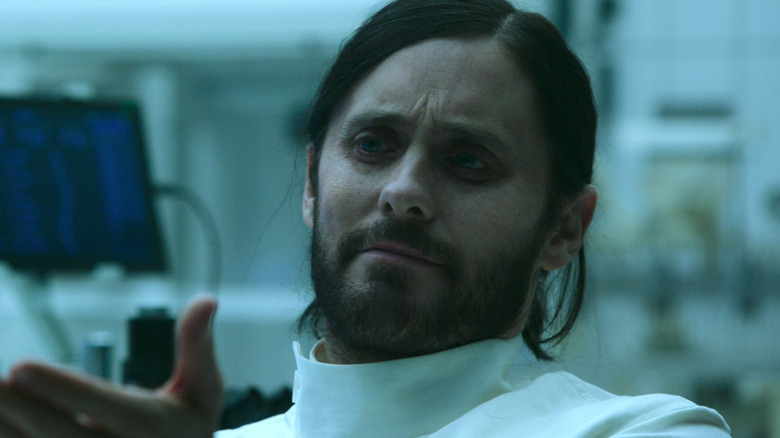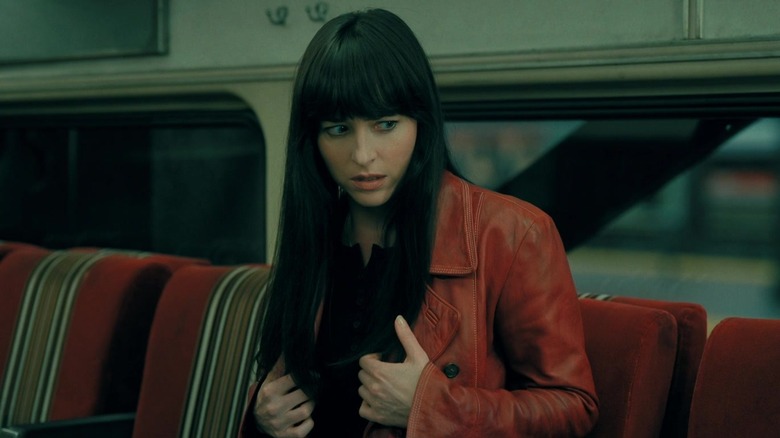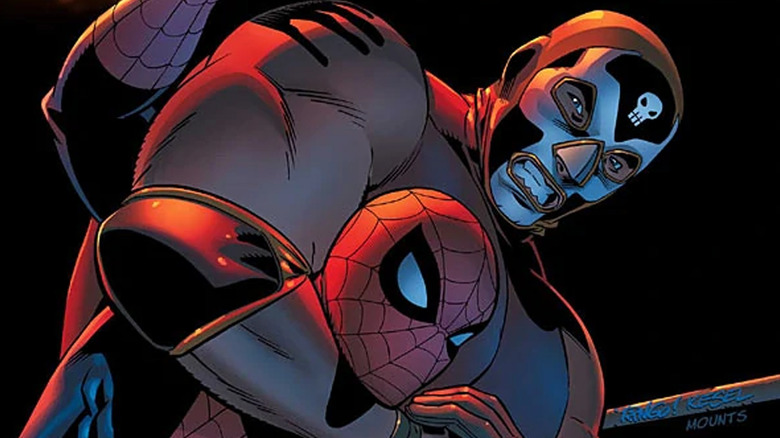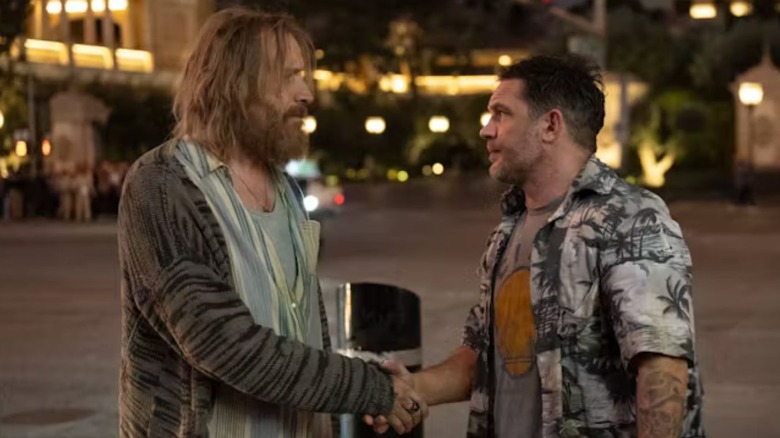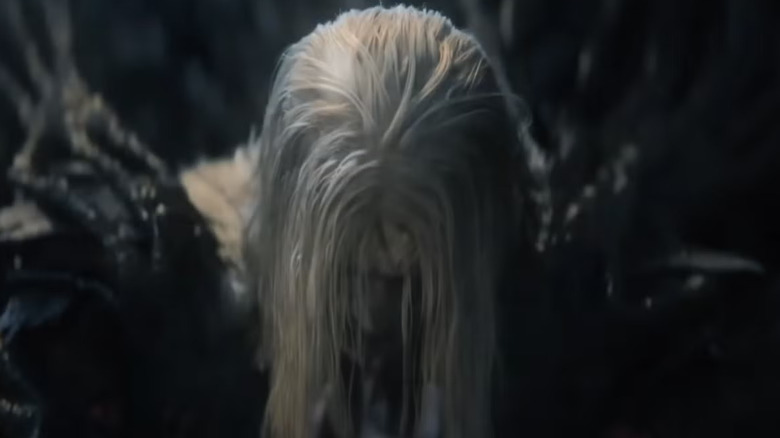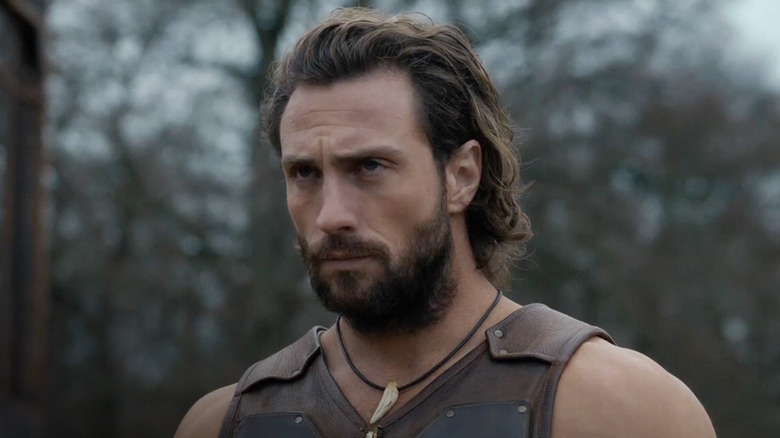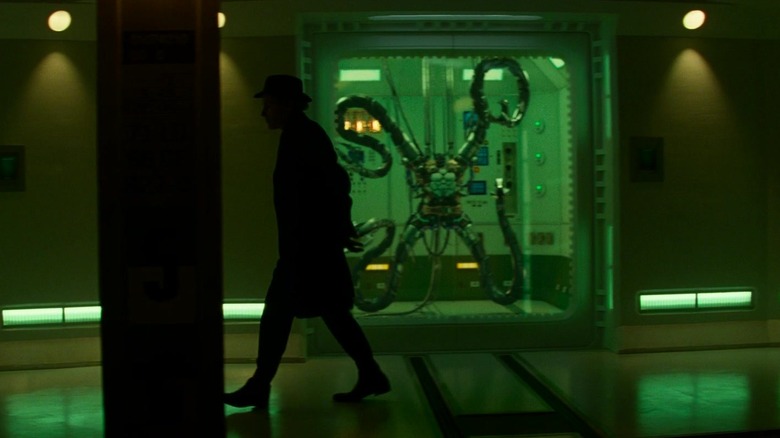The Most Baffling Choices Made In Sony's Spider-Man Universe Movies
Entertainment journalism is, modestly speaking, a vital but mentally taxing burden we bear with quiet bravery.
We've had to not only see but analyze and remember corners of this industry no one should ever be exposed to. Our writers sometimes wake in a cold sweat, screaming about how it's fine to think the Snyder Cut is just "okay." If we close our eyes too tightly, we see flashes of the cursed photoshoot for Universal's Dark Universe, complete with Russell Crowe's hand awkwardly hovering over an invisible chair. And, when the night is quiet, the ghost of Dwayne Johnson promising to change the "hierarchy of power" echoes in the recesses of our once pure psyches.
But none of these compare to the pain that is remembering the birth, life, and agonizing death of Sony's "Spider-Man" Universe. For seven years, we watched them try again and again to prove that comic book fans would literally turn anything into a box office hit. They were right at first. Then wrong. Then wrong again. And again. And again. Here are all the baffling choices from Sony's Spider-Man Universe movies, may they rest in peace.
Making a Spider-Man Universe... without Spider-Man
Sony had been interested in developing "Spider-Man" spin-off movies since the Sam Raimi-era of the franchise, with particular focus falling on Venom, despite the poor reception of "Spider-Man 3." Producer Avi Arad infamously forced Raimi to include Venom in the film and since reflected that his mistake was thinking of the character as a supporting role.
A "Venom" film should have at least peripherally been connected to Spider-Man. Their relationship is foundational to Venom's characterization. And yet, with Garfield's Spider-Verse shuttered and Marvel Studios holding Tom Holland happily hostage, Sony took the most bizarre course of action: creating a "Venom" movie in a universe where Spider-Man has never existed.
In the absence of Spider-Man, Venom is a dramatically aimless character with no point, either thematically or within the context of franchise storytelling. Contrary to Arad's opinion, Venom works best at least in opposition to Spider-Man, showcasing the dangers of great power, and perhaps, under the pen of a talented screenwriter, the shortcomings of the latter's optimistic worldview. They are characters that should only exist in symbiosis — separating "Venom" from its host property leaves it gasping for meaning as a shapeless, goopy mess.
Taking Venom's box-office results as a greenlight for mediocrity
Fortunately for Sony (and unfortunately for everyone else), 2018's "Venom" was a massive financial success. In the face of one of the harshest critical reactions a comic book movie has ever received, it managed to rake in a frankly depressing $856 million worldwide.
Of course, being both Sony's first "Venom" film and the first film overall in the new, then-unnamed Sony "Spider-Man" Universe, many audiences went in without knowing exactly how bad the film was. Yes, they may have seen a review or its Rotten Tomatoes score, but it's impossible to understand how spiritually empty these films are without sitting through one (particularly in a movie theater) yourself. All this to say, Sony should have taken "Venom's" receipts as a near-miss — the film wouldn't harm the embattled studio financially, but they'd need to seriously re-strategize.
So what lesson did Sony learn? Based on comments senior executives made at the time, seemingly that anything could be profitable if you spent enough on marketing. It's a confusing takeaway for Americans specifically, as "Venom" didn't have a memorable marketing campaign in the same way "Deadpool" or "The Dark Knight" did. In China, however, where the film over-performed, special attention was paid to both official marketing efforts and grassroots, viral interest generated by ironic memes about "Venom" pandering to Chinese audiences. Regarding the former, Sony posted cute cartoon images of Venom that did well on the Chinese social media app Weibo — one sees him in a nightclub, similar to a somewhat inexplicable scene that was written for the sequel.
Involving Jared Leto in any capacity after Suicide Squad
More than learning from their own failures, Sony should have been learning from the failures of other studios trying to build similar projects — especially one that had already produced an edgy superhero movie full of Z-list comic book characters anchored by an affrontingly "method" performance from Jared Leto. Indeed, 2016's "Suicide Squad" should have given Sony a laundry list of reasons not to move forward with Leto's "Morbius," which debuted in 2022 to an abysmal critical reception.
Readers may immediately recall strange and disturbing reports about Leto's behavior while preparing for his role as the Joker in the DC film — sure enough, Leto repeatedly freaked out the "Morbius" crew in a similar way. But more than that, Leto was proven to be a divisive and uninspiring presence in "Suicide Squad," and few if any rank his Joker above those of Jack Nicholson, Heath Ledger, or Joaquin Phoenix. To put it bluntly, he's one of those actors audiences seem to dislike on a quasi-personal level.
Leto's hiring isn't as frustrating as other entries on this list. It's simply strange, as Michael Morbius was a nothing role anyone could have played. Why cast an expensive A-lister who is apparently unable to bring A-level prestige to a comic book project? This arguably should have been a sign that some of Sony's commercial sensibilities were a decade behind.
Putting Spider-Man in a Morbius trailer
While "Morbius" did contain at least a few cool "Spider-Man" easter eggs in the final cut of the film, one controversial shot didn't make it, despite being one of the only striking aspects of the marketing run. In an early trailer for the film, Morbius is seen skulking down an alleyway past a piece of graffiti that depicts Spider-Man underneath the word "murderer."
The image was confusing for many reasons, not least of all because it appeared to source the version of the character from Sam Raimi's original trilogy. Further, it would either imply that "Morbius" was set in a different universe from the rest of the Sony Marvel movies or that the entirety of the franchise was set in the Raimi "Spider-Man" timeline. The added appearance of a character from the MCU's "Spider-Man' films only made things harder to understand.
Ultimately, however, the shot was not in the final film — nor was it ever intended to be, according to director Daniel Espinosa. The filmmaker said it was shot without his input, and it was not part of the movie he was trying to make. An uncharitable read of the decision to film and advertise using the shot would assume Sony was cynically including Spider-Man's image to stir either excitement or controversy, if not merely to imply "Morbius" had more of a connection to a real "Spider-Man" universe than it had.
Shoehorning the Vulture into a post-credits scene
Speaking of "Morbius" sticking its fangs where they don't belong, Sony used the multiversal mayhem of "Spider-Man: No Way Home" to drag Michael Keaton's Adrian Toomes (the villainous Vulture, who first appeared in "Spider-Man: Homecoming") into what may be the most shrug-worthy post-credits scene ever filmed. This decision was made before Sony or Daniel Espinosa knew how Tom Holland's Spidey flick would shake out – as he revealed in an exclusive with /Film, the scene had to be retooled after they finally understood the exact mechanics of Doctor Strange's (Benedict Cumberbatch) spell.
Though Keaton's Toomes is a gift to superhero cinema and easily one of the best characters in the film, despite his limited screen time, his inclusion makes no sense from a storytelling or business perspective. Storytelling wise, the spell attracted villains who knew Spider-Man's secret identity in any universe, then sent them home by erasing the memory of Peter Parker from Earth-616. So why, then, would Toomes not only be sent to another universe, but be sent to a universe in which Spider-Man has never existed. Maybe Sony always planned on claiming there was a pre-existing Spider-Man like some unscrupulous comic book insurance provider.
But even if that were the case, what's the plan here? Force Keaton to play this character in a dying franchise until he's 80 years old? Seeing as they could have brought in someone like Tom Hardy's Venom to give the universe real, meaningful connective tissue, it just seems like Sony was trying to cash in on the MCU's goodwill.
Releasing Morbius twice
The last and inarguably the most incredible misstep of Sony's "Morbius" saga (save making Matt Smith dance around to the "Have Sex" song) was, of course, releasing the movie a second time after it had already bombed at the box office. For whatever reason, "Morbius" attracted significant attention from social media in a way "Venom" nor "Venom: Let There Be Carnage" had, leading to an endless slew of unhinged "Morbin" memes that summer.
If there's one thing you can take away from this article, it's that no one reads a room quite like Sony. Surely, they must have thought, this viral internet mockery is a sign that people will want to drive to a theater post-pandemic and pay $10+ to see this obviously bad "movie" in a closed environment where they can't order food, check their phone, make fun of Jared Leto's vampire face to their friends, etc.
Sadly, as is apparently becoming a generation-defining lesson everyone is learning in the most annoying ways possible, memes are not financially sound investments. The re-release didn't even clear $100,000 on its first day, and wound up only netting about $300,000 overall.
Producing a Madame Web movie, period
As fundamentally misguided as the entire Sony Spider-Man-less Spider-Verse was from the jump, we can at least acknowledge that Venom and Morbius do have enough comic book material to warrant standalone movies (under a very specific context that involves, preferably, prior world-building and/or a really imaginative creative team that can make such material work). Madame Web, on the other hand, does not.
Sony had admirably and vocally been angling to produce a female-led "Spider-Man" movie almost as long as the new iteration of the franchise had existed. A Black Cat, Silver Sable, or Spider-Woman film would have made perfect sense — to make any of them watchable, however, you'd probably have to spend more than the meager $100 million Sony was willing to toss at these projects (adjusted for inflation, Sony spent nearly $300 million on "The Amazing Spider-Man" — the most expensive post-"Venom" film got only $110 million).
Instead, they opted to make "Madame Web," a film based on a character who has never once led a solo-series and is the supporting character of supporting characters in "Spider-Man" comic books. The film is hardly a superhero movie by any means, nor is it the landmark for representation Sony was aiming for. They don't even depict the character using a wheelchair until the film's final moments. It was also an unmitigated box office bomb, despite the slim budget.
Spending any time developing El Muerto
There were even more stupefying development plans than "Madame Web," if you can believe it. With characters like Otto Octavius (who, in addition to being Doctor Octopus, was once Spider-Man himself in one of the coolest comic book twists of all time) and Norman Osborn in their legal wheelhouse, Sony instead spent time trying to convince Spike Lee to direct a "Nightwatch" movie. Oh, and they also tried to work with Donald Glover on a project starring the Hypno Hustler (instead of, y'know, a version of the Prowler, a fascinating character whom Glover had already portrayed and whom audiences already had an emotional connection to thanks to "Into the Spider-Verse).
The most roundly ridiculed decision of this kind came in the form of "El Muerto," a proposed feature film adapting a "Spider-Man" villain who had appeared in just two comics. Again, an uncharitable read of the situation could lead one to believe Sony cynically thought they could simply print money by slapping the Marvel logo on a movie and casting musician Bad Bunny in the starring role. Neither comic book nor music fans care about art or storytelling, right?
Folks like comic book creator Brian Michael Bendis were optimistic about these kinds of moves at first, likening them to Marvel taking chances on once unknown characters like Iron Man. But Iron Man was always a fairly major player in the Marvel Comics Universe at large. If Kevin Feige had managed to build a multi-billion dollar cinematic universe around Flatman, maybe we could have had more faith in "El Muerto."
Recasting Rhys Ifans for Venom: The Last Dance
When "House of the Dragons" secret weapon Rhys Ifans popped up in a trailer for "Venom: The Last Dance," it was surprising for a couple of reasons. First, Ifans famously played Dr. Curt Connors — aka The Lizard — in "The Amazing Spider-Man," which seemingly takes place in a separate universe from the "Venom" films. Second, Ifans reportedly spent his first Comic-Con appearance in 2011 drunkenly complaining (in Hall H) about how much he hates comic book movies and, most especially, comic book fans. "I'm 44 years old today, drunk as a Lord, and, thanks to [The Lizard], completely bereft of dignity," he said, per the San Diego Reader. "I hate you all. Good night."
Whatever, right? That was over a decade ago, and Ifans had presumably played nice enough with Sony and Marvel for his (albeit brief) role in "Spider-Man: No Way Home." Why not bring him in, a la Michael Keaton's Vulture, even if it makes no sense? Give the universe some oxygen via crossovers as it dies the slowest death in movie history. This is, however, too coherent a strategy for the Sony "Spider-Man" Universe, so they just had Ifans play a random guy in a van. Cool.
Introducing Knull in the final Venom movie
"Venom: The Last Dance" was never going to be good, but there were a few signs leading up to the release that made it seem at least watchable. Before we knew Rhys Ifans was Just A Guy, the multiverse angle seemed more compelling than anything in any previous "Venom" film. Kelly Marcel was also taking over as director, giving the film a (hopefully) cohesive vision from an artist who actually has a fair track record with movies like "Cruella" and "Saving Mr. Banks" in her past. Plus, there was that Venom-horse shot from the trailer, which was, academically speaking, very rad.
Chief among these positive signs was the introduction of Knull, a relatively new and godly figure from the comics played by Andy Serkis. The character brings with him a sense of scale, leaping beyond yawn-worthy symbiote clones to one of the most terrifying Marvel villains ever created. But Knull is an expensive character, and we should have remembered that Sony's financial mindset for these movies was seemingly that of someone buying scratchers from the drug store (even if they absolutely won't win, at least they only spent $100 million). The villain barely moves from his goop-throne the entire film, and is sure to die a whimpering death along with this entire series.
Turning Kraven and other fascinating villains into boring superheroes
Much hay was made when the "Kraven the Hunter" team let slip that their take on the character was to be an "animal lover." Indeed, in the comics, the apex-poacher loved that lion so much he turned him into the sickest vest ever made.
Jokes aside, the whole "Kraven the Animal Lover" discussion was fairly irrelevant, even at the time (the movies weren't even pretending to be cogent post-"Morbius," so who cares). Broadly speaking, however, it does point to the wider issue of Sony refusing to let these characters be villains.
If they had leaned into the moral darkness inherent in their chosen stars, they could have produced challenging and genuinely interesting films that may have even preceded such deconstructions of the superhero genre as "The Boys." "Kraven," "Morbius," and "Venom" could have twisted tropes like the vigilantism of Daredevil, the obsessive brilliance of Tony Stark, and the great power of Spider-Man, interrogating these concepts through the eyes of complex but in some ways more relatable characters.
Abandoning the Sinister Six
Another one of Sony's longtime plans for their "Spider-Man" IP, a "Sinister Six" film was the studio's white whale (before anyone at Sony gets any ideas, no, White Whale is not an obscure "Spider-Man" villain you can turn into a box office bomb). Though Spider-Man himself lacks a buzzy team that would facilitate an event-level ensemble crossover (see: "The Avengers"), he does have a vast rogues gallery that, perhaps after being introduced in their own films, could "assemble," for lack of a better word.
At a base level, a supervillain team-up movie is a really fun idea that could actually print the studio money, especially if they avoided the pitfalls of 2016's "Suicide Squad" (who are we kidding, they absolutely would not — Jared Leto was already baked in). There are certainly ways this could be done even without Peter Parker being involved, styling the movie as something of a sci-fi western about outlaws who come together to fight some greater evil. Heck, take a page from "Spider-Man: Edge of Time," cast an older actor to play an evil CEO Peter Parker, and send the Six into the future to stop him. Sony could even use it to launch a 2099 universe with Miguel O'Hara. We're just spitballing here. (Again, no, Spitball is not an obscure "Spider-Man" villain you can turn into a box office bomb.)
At this point, if we had to guess why Sony stopped angling toward a "Sinister Six" movie despite the benefits it would offer to their brand, we'd chalk it up to (surprise, surprise) budget! In addition to VFX for six-to-seven characters, Sony would have to also fill those roles with name-talent. You can't make the blockbuster version of that movie for less than $250 million.
As I'm sure we can all agree after this slog down memory lane, we'd rather have one expensive movie that's good than six that aren't even worth watching.
